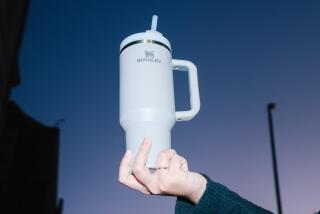Gear: Getting taken for a ride
Serious cyclists become obsessed with flashy new miracle-material frames and high-tech componentry, but there’s also plenty of innovation among the less-glamorous parts of the bike. Here’s proof that essential-but-mundane products like inner tubes, pedals, water bottles and indoor training stands can have a “wow” factor too.
Keep the air in there
Michelin Protek Max flat-proof inner tube: Unique diamond-shaped tube covered in ridges and pimples that automatically seals when punctured.
Likes: In theory, the odd pattern of bumps and ridges on the surface of the tube eliminates the Achilles’ heel of cycling — flat tires. When a puncture occurs, the uneven surface naturally compresses and squeezes the hole shut; smooth tubes, on the other hand, tend to stretch a hole into a larger tear. Sealant inside the Protek Max tube finishes the job. I can’t tell for sure that it’s working, but I haven’t had a flat on my mountain bike in a month. Michelin claims the tube maintains pressure longer than conventional tubes while sitting in your garage.
Dislikes: No tubes available for skinny-tire road bikes — just mountain and wide 700C-wheel city bikes. It costs twice as much as a normal tube and weighs more too, adding 1 ounce to a standard road bike and 2 ounces to a mountain bike. The tradeoff is worth it for most riders except gram-shaving racer types.
Price: $8.95. (800) 346-4098; https://www.michelinbicycle.com.
Pretty pedal
Ergon PC2 pedals: Lightweight, platform-style composite pedals made for touring, commuting and everyday riding that have a rough, sandpaper-like surface and a 6-degree tilt designed to increase power and comfort and reduce slippage.
Likes: Works as advertised. By nestling the ball of your foot into its proper power position, this extra-long (41/2-inch) pedal is comfortable and efficient; Ergon claims this “optimizes hip, knee and foot biomechanics” and prevents injuries and foot numbness. The rough surface, made of 3M Safety Walk material, keeps your foot from slipping, even in the rain. The smooth, reflector-embedded shape looks stylish and won’t tear up your leg like the metal teeth on standard pedals.
Dislikes: Very expensive for non-clip-in pedals
Price: $69.95. (323) 848-4665; https://www.ergon-bike.com.
Nonstink drink
Specialized Purist water bottle: Plastic bottle with a thin interior coating of silicon dioxide that cleans instantly and prevents liquids from acquiring the taint of plastic or a previous beverage.
Likes: Seems to work. Old water tastes plastic-free, as if it had been stored in a glass bottle. There’s little to no aftertaste after using it to hold an energy drink. The soft pull-out spout won’t spill liquid when in the open position and tipped upside-down, except when sucked or the bottle is squeezed, similar in concept to the innovative CamelBak Podium bottle. A clear strip running the length of the bottle allows easy viewing of contents. Specialized claims the interior coating cleans up with a simple squirt of dishwashing fluid and a quick shake; a scrubbing will damage it.
Dislikes: Not cheap, but on par with the Podium. Although the spout locks down well, it is not as foolproof as the Podium’s twist-lock.
Price: $11 for 22-ounce bottle, $12 for 26-ounce bottle. (408) 779-6229; https://www.specializedwaterbottles.com.
Direct-drive trainer
LeMond Revolution trainer: Unlike typical trainers that rest the rear wheel of your bike on a metal disc, the Revolution replaces the wheel with a heavy flywheel attached directly to your bike’s drivetrain through a built-in matching rear gear cluster. The unique design is modeled after a contraption built by a neighbor of Greg LeMond in the early 1980s and forgotten in the garage of the three-time Tour de France champion for the last 20 years.
Likes: Smooth, consistent pedaling and “road feel” and progressive wind resistance with none of the problems of standard trainers, such as tire wear or tire slippage during acceleration. Your bike attaches and detaches easily to the 32-pound unit, clamping on via the rear dropouts as you attach your chain to the unit’s freewheel. There’s no need for a front wheel block since the rear dropout height is the same as the front. An optional power meter ($349) can display distance, speed, heart rate and calories burned (and download the data with USB and ANT+).
Dislikes: It’s loud; you have to crank the TV volume way, way up to hear it. The base, at 24 inches wide, is a bit less stable while standing out of the saddle than some wider-based trainers. It’s double the price of conventional trainers (but worth it).
Price: $499 without a cassette; $549 with a Shimano/SRAM compatible 10-speed; $569 with Campy hub adapter. (425) 482-6773; https://www.lemondfitness.com.
Wallack is the author of “Bike for Life: How to Ride to 100” and “Run for Life.”






